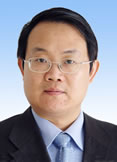Article republished from Intellectual Property Watch September 24, 2015 http://www.ip-watch.org/2015/09/24/un-sdgs-need-u-turn-on-governance-for-health/
The 2030 Agenda for Sustainable Development, to be adopted this week at UN Headquarters, could fall short of its health targets unless the governments embark on “U-turn” changes to rectify the dysfunctions in global governance that undermine health
by Daniele Dionisio*
Policies for Equitable Access to Health – PEAH
UN SDGs Need U-Turn on Governance for Health
In today’s world landscape, which is torn by dis-alignment, litigations and frictions among the involved parties, the root causes of health inequities are to be found in weaknesses in political domains at the supranational level. As reported, these include: democratic deficit, weak accountability, institutional stickiness, missing institutions and restricted policy space for health.
This context entails that unbiased solutions for global health only hinge on political will to improve equity, coherence, coordination, collaboration, transparency and accountability both at domestic and international level.
Unfortunately, the current governments’ directions and trade agreements, largely by the European Union (EU) and the United States (US), run contrary to these principles while turning intellectual property (IP) agendas into policies which protect monopolistic interests at the expense of equitable access to care and lifesaving treatments in resource-limited settings.
In this connection, since the incentives of the current patent system are driven by profits, where short-term maximization of returns to shareholders is prioritized, the lower-income countries lacking profitable pharmaceutical markets are all the more discriminated.
Overall, this represents the failure of the current policies for global health as featured, just for example, by the mismanaged containment of current Ebola epidemic.
Meanwhile a 2030 Agenda for Sustainable Development is to be adopted this week at UN Headquarters. The Agenda consists of 17 Sustainable Development Goals (SDGs) and 169 targets that aim … to be a charter for people and the planet in the twenty-first century. They will stimulate action over the next 15 years in areas of critical importance towards building a more equitable and sustainable world for all.
As highlighted, …..In that scheme, the health goal ranks high as an overarching aim amidst the other 16 SDGs. It includes nine targets: three relating to MDGs, three to non-communicable diseases and injuries, and three cross-cutting or focusing on systems encompassing UHC, universal access to sexual and reproductive health care services, and also to reduced hazards from air, water and soil pollution.
Furthermore, the health goal strictly entwines with a number of the other 16 proposed goals. For example, health is a contributor to (and a beneficiary from) poverty reduction, hunger relief and improved nutrition, safer cities, lower inequality, sustainable consumption, affordable and clean energy, toxic chemicals management, clean water and sanitation, and to the efforts to combat climate change and safeguard aquatic and terrestrial ecosystems as well.
Relevantly, what expectations on the world landscape mentioned above? Hopes that comprehensive, non-discriminatory health goals could easily be reached are hardly credible with the load of unresolved issues still on the table. As argued “…Achieving health equity is not just a matter of coming up with technical solutions and providing the means to finance them. We have to consider the political landscape and rectify the dysfunctions in global governance that undermine health…
Admittedly, governments in the most affluent countries look like they wouldn’t be ready to embark on these gaps as an opportunity to advance public health over political and commercial interests.
Call for Common Governance Agenda
As such, prospects for global health goals only depend on non-stop, multi-sector engagement worldwide to pressure governments into making “U-turn” changes by common measures on a shared agenda that include:
- Rejecting pressures towards adopting heightened IPRs and strengthened enforcement mechanisms as the keys to foreign investments and innovation.Reportedly, …inclusive evidence typically shows that most low- and middle-income countries do not benefit economically from IP maximization since they are net importers of IP goods and since the path to technological development is ordinarily through copying and incremental innovation-development tools that are severely undermined by IP monopoly rights and their related restrictive licensing agreements…
- Rejecting World Bank income classification to measure a country’s capacity to afford high-priced medicines. As argued, ...the World Bank classification dates back to the 1980s and only measures a country’s per-capita average of total income. However, the map of poverty has changed since the 1980s. Today, the majority of the world’s poor no longer live in poor countries, but rather in places where there is greater wealth along with higher inequality.
Relevantly, MSF recently contended that ….the US Medicaid-defined poverty line ($21.50/person per day) would be a far more reliable tool to estimate how many millions will live below it once countries cross the high-income threshold. As regards TPP countries, MSFalso highlighted that …In eight of the 12 TPP countries for which there is data, more than a quarter of a billion people will live below the US Medicaid line when their country is classified as high income. By the time Malaysia and Mexico reach high income designation, more than 80 percent of their populations will still fall below this poverty line. Among current high-income TPP countries, the percentage of the population under this poverty line ranges widely, going as high as 69 percent in Chile.
- Rejecting privatization policies, including by publicly funded insurance packages using networks of private providers. As reported, ….while reinforcing the notion that healthcare is a commodity and not a basic human right, this approach, proposed by the World Bank and their allies, has several problems and side effects: fragmentation of care, higher cost, precedence of procedures over preventive medicine and further dismantling of the public healthcare system. At the same time, insurance packages divert attention and funds from a more comprehensive approach directed at modifying the root causes of disease, through socioeconomic interventions aimed at increasing equity.
Inherently, as per a report from the Philippines, …the current privatization policies of the Philippine government do not provide an answer to the enormous health needs. Despite the name of the Philippine “Universal Health Care” program that claims to “bring equity and access to critical health services to poor Philippinos”, commercialization of health services will do exactly the opposite. Unfortunately, the European Commission is supportive of these policies and formerly approved a contribution of euros 33 million in support of the Health Sector Reform Agenda of the Philippine government….
- Rejecting closed doors negotiations since they blur transparency.
- Banning the non-violation nullification of benefits (NV) clause under TRIPS.
- Banning TRIPS-plus clauses, including investor state dispute settlement (ISDS) provisions, that could negatively affect health and worsen inequalities in access to care and treatments.
- Withdrawing pressures on LMICs to jeopardize the use of TRIPS safeguards and flexibilities relevant to the price of medicines.
- Pushing for open knowledge and new approaches to pharmaceutical innovation that do not rely on the patent system and de-link the costs of R&D from the price of medicines.
- Promoting technology transfer with least-developed countries without exporting excessive IP standards through assistance programs.
- Backing generic competition as the most effective way to lower medicine prices in a sustainable way.
- Backing governments that make use of TRIPS safeguards and flexibilities to protect and promote public health.
- Linking together patent offices and legislators worldwide to develop evidence-based reforms of the patent regime of medicines. As contended, …[I]f countries set higher standards for incremental innovation patenting, and permit citizen or third-party review of patents before and after examination, then we will likely see increased generic competition in the …..market, new combination therapies, and lower … prices. In the longer term, higher inventiveness standards will help clear the patent thicket to allow new products to develop, and push industry towards genuine innovations….
- Calling on companies to join the Medicines Patent Pool.
- Actively supporting partnership agendas (as per DNDI and GAVI examples among others) that are devoted to the development of new medicines and vaccines for neglected diseases that disproportionately affect poor population settings.
- Ensuring that the Global Fund to Fight AIDS, Tuberculosis and Malaria continuesto use generic medicines and support UNITAID work to make quality medicines and diagnostics available and affordable.
- Ensuring that revenues from a Financial Transaction Tax (FTT), whose approval isin slow progress in Europe, will be substantially committed to development and for the fight against health scourges, diseases of the poor and pandemics. FTT revenues would be a resource for the EU to channel towards the WHO and Global Fund needs. An FTT would be instrumental to the spirit and resolutions of latest WHO Assemblies. Hence, it should be up to the EU to push that non-discriminatory access to health and lifesaving medicines becomes a substantial objective for FTT revenues.
- Ensuring that leading institutions and organizations enhance working with health ministries to strengthen national systems, invest in infrastructures, improve transparency and accountability, and boost needs-driven rather than market-driven rules. This would mean giving up “closed doors”negotiations and adopting multi-sector participatory models for decisions affecting national health, growth, employment and budgets.
- Ensuring that international agreements include clauses whereby donors must strengthen WHO-aligned quality clauses in tender transactions with non-governmental organizations, while purchasers must insist that manufacturers and distributors supply medicines that meet WHO requirements, and governments must authorize export only of products meeting WHO quality, efficacy and safety standards.
- Ensuring that research and innovation for health is linked to improving economic prosperity and is critical to eradicating poverty, since poor health and disability contribute substantially to poverty.
- Ensuring that indicators for R&D for health tools that primarily affect LMICs address a comprehensive set of outcomes including financing, infrastructure and human resources needs, enabling policies, necessary partnerships, capacity strengthening, and access requirements.
- Ensuring that any research and innovation indicators measuring progress against the goals and targets outlined in the post-2015 agendaalso increase accountability of researchers, governments, and funders, and inform research processes. Ultimately, the success or failure of the post-2015 agenda relies just as much on how the goals and targets are implemented as it does on how progress will be measured. In support of the inclusion of research and innovation for health in the post-2015 agenda, over 150 organizations and individuals last year signed a petitionto Secretary General Ban Ki-Moon and Member States urging the UN to keep the research, development, and delivery of new and improved health tools for diseases and conditions impacting LMICs at the heart of the post-2015 development agenda.
- Seeking synergies among global level institutions to address global health challenges, support stronger leadership by the WHO to improve global health, enhance dialogue and joint action with key players, including UN agencies involved in global health, international financing institutions, regional organizations, regional health networks, and countries, in order to coordinate actions, advance in the achievement of commitments, and avoid overlapping and fragmentation.
- Seeking synergies for equitable health access with fast growing, including BRICS and N-11, middle-income country economies.
- Pushing for more complementaryrelations among World Bank, IMF, ADB, AFDB, AIIB and the BRICS Development Bank as regards the development and health needs of marginalized population settings in LMICs.
- Pushing for full exemption of out-of-pocket expenses for the poor; poor-friendly pathways towards universal health coverage; heavy taxation on tobacco and other harmful substances; and reduction or elimination of agricultural export subsidies and energy subsidies on air-polluting fuels.
- Opposing land grabbing, deforestation and state-managed food reserve dismantling policies.
- Reversing “brain drain”, health worker shortage by a transformation of the present training approach, as to adapt curricula to local needs, promote strategies to retain expert faculty staff, expose trainees to community needs during training, promote multi-sector approach to education reforms, and strengthen links between the educational and health care delivery system. Western academic institutions’ role is to facilitate the process.
- Asking for the European Medicines Agency (EMA) to be financed only throughEU budget as per application fees channeled to the European Commission. This would improve transparency and accountability.
- Asking for anti-counterfeit laws and law enforcement policies not to substitute for effective national regulatory frameworks.
- Asking for organizations with potential conflicts of interests and IP perspectives to issue statements eschewing the use of IP law to counter generic medicines.
- Asking for investment in technologies to detect “bad medicines”to be followed upwith provisions to increase public awareness and incident reporting, along with regulations on medicine quality that include definitions as per shared WHO terms.
—————————————————————————————-
*Daniele Dionisio is a member of the European Parliament Working Group on Innovation, Access to Medicines and Poverty-Related Diseases. He is an advisor for “Medicines for the Developing Countries” for the Italian Society for Infectious and Tropical Diseases (SIMIT), and former director of the Infectious Disease Division at the Pistoia City Hospital (Italy). Dionisio is Head of the research project PEAH – Policies for Equitable Access to Health. He may be reached at d.dionisio@tiscali.it http://www.peah.it/ https://twitter.com/DanieleDionisio


